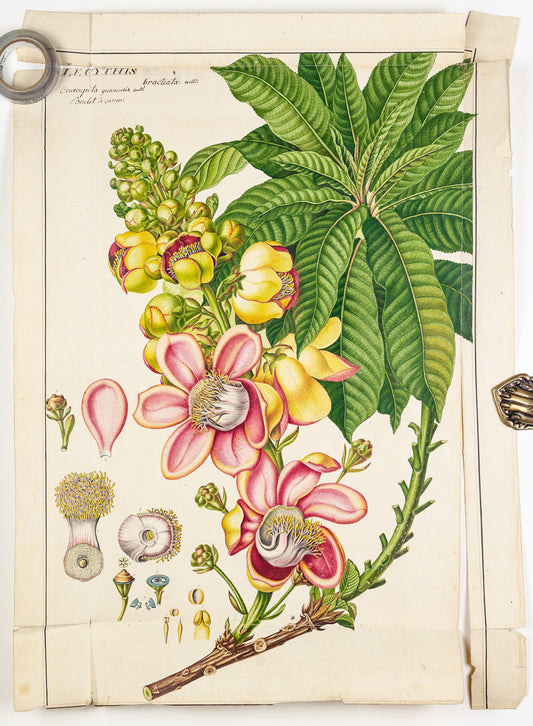Collection: Poiteau & Turpin Superb Botanical Drawings including varieties from the West Indies
Poiteau & Turpin
Superb Botanical Drawings, including varieties from the West Indies
Pierre-Antoine Poiteau and Pierre Jean François Turpin’s botanical drawings are among the most exquisite of the nineteenth century. Their remarkable precision surpassed the mere requirements of scientific illustration.
When the unlikely duo met in 1794, each brought a complementary skill to the friendship. Turpin, a skilled draftsman, was just a teenager of 19 serving in the military, while Poiteau was a self-taught botanist who had begun to hone his craft at the age of 28. Their stories became intertwined through a fortuitous encounter in a Santo Domingo garden; from then on, drawing became the core of their joint artistic practice.
The present collection of Poiteau and Turpin’s works is the largest intact grouping of their works and remains in extraordinary condition, having rarely been exposed to light in the last two hundred years. Drawings include preparatory works for several publications, most notably:
Individual images by these artists can be found in distinguished collections such as the Hunt Institute for Botanical Documentation at Carnegie Mellon University and the Royal Horticultural Society’s Lindley Library.
Provenance
The collection belonged to the French sculptor François-Frédéric Lemot (1771–1827), a student of Claude Dejoux and winner of the Grand Prix of the Royal Academy of Sculpture in 1790. Lemot participated in the construction of the Arc de Triomphe du Carrousel and later executed the large eastern pediment of the Louvre colonnade.
Under the Restoration, he was entrusted with the commission to erect the equestrian statue of Henri IV on the Pont-Neuf. Passionate about Italy, whose landscapes left a lasting impression on him, Lemot acquired the estate of La Garenne (Loire-Atlantique) in 1805, where he laid out an Italian-style park, planting several hundred trees and flowers. The buildings he constructed there reflected his desire to create “a little Italy” on the banks of the Sèvre Nantaise.














